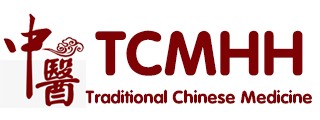NAME
GESHU
LOCATION
1.5 cun lateral to the lower border of the spinous process of the seventh thoracic vertebra, level with DU-9 Zhiyang.
Locate at the visible highest point of the paraspinal muscles.
Oblique insertion towards the spine, 0.5 to 1 cun.
Transverse insertion 1 to 1.5 cun.
Caution: perpendicular needling or oblique needling away from the spine carries a substantial risk of pneumothorax.
NEEDLING
Straight insertion, slanted slightly toward the spine, 1 to 1.5 cun Sensation: local soreness and distention, sometimes extending between the ribs
Caution: Do not needle to deeply in order to avoid puncturing the Lung
Transverse insertion, pointed downward along the muscle1 to 2 cun
Sensation: local distention and soreness Locate at the highest visible point of the paraspinal muscles.
Puncture obliquely 0.5 to 0.7 cun.
Moxibustion is applicable.
COMMAND FUNCTIONS
Hui-Meeting point of Blood
Back-Shu point of the diaphragm
ACTIONS
Regulates the Blood
Transforms Congealed Blood
Expands the chest and diaphragm
Strengthens Deficient conditions
Invigorates the Blood
Dispels Blood Stasis
Cools Blood Heat
Stops bleeding
Nourishes and harmonizes the Blood
Harmonizes the diaphragm
Removes obstructions from the diaphragm
Descends Rebellious Qi
Pacifies Stomach Qi
Tonifies Qi and Blood
Calms the Shen
INDICATIONS
Upper Jiao wasting and thirsting with intense thirst
Steaming bone syndrome
Scrofula
Urticaria
Psoriasis
Abscesses
Carbuncles
Anemia
Amenorrhea due to Blood Dryness
Tidal fever
Fever and chills
Night sweats
Excessive sweating
Stomach ache due to Blood Stasis
Abdominal distention and lumps
Lassitude
Chronic somnolence
Hematemesis
Spitting Blood
Hemafecia
All Blood diseases
Dizziness
Fever with absence of sweat
Aversion to Cold
Whole body Bi pain
Pain of the skin, flesh and bones
Frequent stretching and yawning
Weariness of the four limbs
Somnolence
Rigidity of the spine
Belching
Afternoon fever
Hiatal hernia
Diaphragmatic spasm
Esophageal constriction
Chronic bleeding
Epistaxis
Hemoptysis
Nervous vomiting
Tuberculosis of the lymph glands
Stomach cancer
Oppression of the chest
Heart pain
Stabbing pain of the Heart
Mania-Depression
Coughing with dyspnea
Throat Bi
Epigastric pain with vomiting
Fullness of the abdomen and lateral costal region
Vomiting
Vomiting of food eaten the day before
Hiccup
Difficult ingestion
Stomach reflux
Inability to eat
Heart pain on eating
Jaundice
Heaviness of the body
Swelling, distention and pain of the body
Lethargy with no desire to move
Back pain
Dysphagia
Asthma
Measles
COMBINATIONS
| REN-22 Tiantu REN-17 Shanzhong REN-14 Juque ST-36 Zusanli | DU-14 Dazhui UB-21 Weishu SP-10 Xuehai ST-36 Zusanli | LU-8 Jingqu |
| Diaphragmatic spasm | Anemia | Swollen and painful throat (throat Bi) |
| UB-19 Danshu UB-43 Gaohuangshu M-BW-6 Huanmen | LIV-13 Zhangmen REN-12 Zhongwan | GB-8 Shuaigu |
| Moxa for the hundred syndromes of Deficiency-taxation | Moxa for vomiting | Cold Phlegm in the diaphragm and Stomach |
| UB-45 Yixi UB-63 Jinmen LU-5 Chize | REN-19 Zigong REN-18 Yutang | UB-18 Ganshu |
| Contraction and Cold of the shoulder and back with pain of the inner aspect of the scapula | Bone pain | Nourishes Liver Blood Removes Liver Blood Stasis |
| UB-15 Xinshu | UB-20 Pishu | UB-19 Danshu |
| Nourishes Heart Blood Removes Heart Blood Stasis | Nourishes the Spleen's function of manufacturing Blood | Moxa to tonify Qi and Blood (The Four Flowers) |
| UB-18 Ganshu UB-20 Pishu | ||
| Moxa to tonify Qi and Blood (The Magnificent Six) |
CONTRAINDICATIONS
NOTES
This is an important point with many functions. This is an important point for many kinds of bleeding disorders. It has an important action on the diaphragm.
